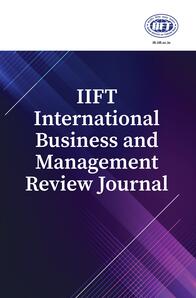
1B. K. School of Professional and Management Studies, Gujarat University, Ahmedabad, Gujarat, India
Creative Commons Non Commercial CC BY-NC: This article is distributed under the terms of the Creative Commons Attribution-NonCommercial 4.0 License (http://www.creativecommons.org/licenses/by-nc/4.0/) which permits non-Commercial use, reproduction and distribution of the work without further permission provided the original work is attributed.
The origin of brands across geographies has always remained a fascination for many consumers around the world. Although easing of restrictions on borders has made almost any brand made anywhere in the world find a convenient place to be sold at any other geographic location far or distant, the craze in some consumers of having an ‘imported’ brand still remains, although that brand may have been manufactured nearby within their country in a franchisee manufacturing unit which the consumer never knows. The phenomenon called as acquiring an ‘imported’ brand has got re-defined with the easing of WTO restrictions since 2001, whereupon there is no restriction on anything sold anywhere after being manufactured anywhere in the world. This article looks into the various aspects related to the consumer buying behaviour for so-called imported or foreign origin brands and to what extent this imported tag or foreignness tag plays a role in making consumers like it.
Brand, origin, consumer, buying, imported, geography
Balabanis, G., & Stathopoulou, A. (2019). Favoritism toward foreign and domestic brands: A comparison of different theoretical dexplanations. Journal of International Marketing, 27(2). https://doi.org/10.1177/1069031X198379
Batra, R., Ramaswamy, V., Alden, D. L., Steenkamp, J. B. E. M., & Ramachander, S. (2000). Effects of brand local and nonlocal origin on consumer attitudes in developing countries. Journal of Consumer Psychology, 9(2), 83–95.
Chan, T.-S., Cui, G., & Zhou, N. (2009). Competition between foreign and domestic brands: A study of consumer purchases in China. Journal of Global Marketing, 22(3), 181–197.
Kotler, P., & Keller, K. (2016). Marketing management (15th ed.). Pearson.
Lohan, A., Ganguly, A., Kumar, C., & Talukdar, A. (2021). Foreign product preference among Indian consumers: The role of product reviews, word of mouth and quality of shared information. Journal of Information & Knowledge Management, 20(04), 2150048. https://doi.org/10.1142/S0219649221500489
Momen, M. A., Sultana, S., Ferdousi, F., & Shahriar, S. H. B. (2022). Determinants of choosing a foreign brand in emerging economy: Lessons and implication for the local entrepreneurs. Vilakshan: XIMB Journal of Management, 19 (2), 195–205.
Schuiling, I., & Kapferer, J. N. (2004). Real differences between local and international brands: Strategic implications for international marketers. Journal of International Marketing, 12(4), 97–112.
Srivastava, R. K. (2014). Impact of country of origin on Indian consumers: Study of Chinese brands. Asian Journal of Marketing, 8, 54–70.
Sulhaini, S. (2021). Consumer behavior towards foreign versus local products and brands: Future research directions. Advances in Social Science, Education and Humanities Research, Volume 556 Proceedings of the 2nd Annual Conference on Education and Social Science (ACCESS 2020).
Winit, W., Gregory, G., Cleveland, M., & Verlegh, P. (2012). Global vs. local brands: How home country bias and price differences impact brand evaluations. International Marketing Review, 31(2), 102–128.